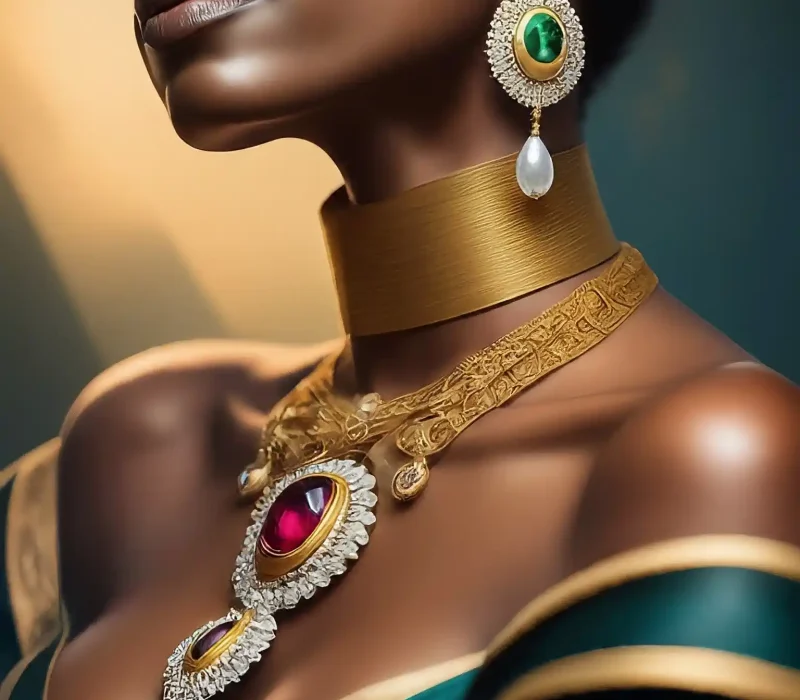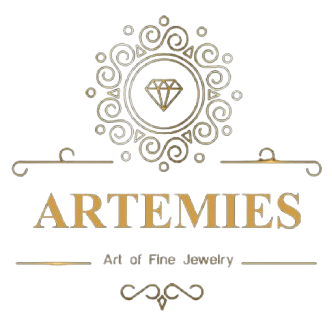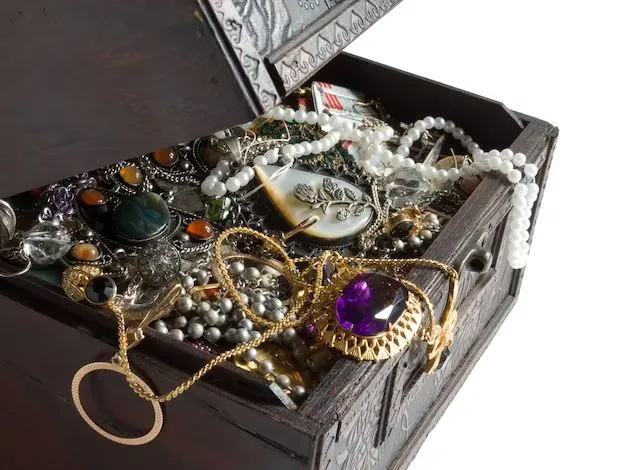Jewelry and Social Status: A Historical Exploration of Wealth and Power

Table of Contents
Throughout history, jewelry has played a prominent role in signifying social status and wealth. From the earliest human civilizations to modern times, people have used adornments not only for personal expression but also as a visible marker of their place in society. Jewelry has symbolized power, prestige, and success, evolving in form, material, and meaning across different cultures and historical eras. This article explores the role of jewelry as a symbol of social status from ancient times to the present day, shedding light on its enduring significance.
Jewelry in Ancient Civilizations: A Marker of Power and Divine Connection
In ancient civilizations, jewelry was often more than a simple decorative item. It was deeply intertwined with religious, cultural, and societal structures, often serving as a marker of divine favor and royal authority.
• Ancient Egypt:
The Egyptians were among the earliest civilizations to craft elaborate jewelry. Pharaohs and high-ranking officials adorned themselves with gold, gemstones, and intricate designs to symbolize their closeness to the gods and their superiority over the common populace. The use of gold, in particular, was believed to represent eternity and was associated with the sun god Ra. Amulets, pendants, and necklaces were not just accessories but symbols of protection and divine power.
• Mesopotamia:
In Mesopotamian culture, jewelry signified wealth and rank. Crafted from precious metals like gold and silver, along with semiprecious stones such as lapis lazuli and carnelian, jewelry was worn by the elite as a status symbol. The craftsmanship of the pieces often indicated the wearer’s proximity to royalty or the priesthood. Jewelry was also used in burial rituals, where the dead were adorned with their finest pieces to signify their status even in the afterlife.
• Ancient Greece and Rome:
In both Greece and Rome, jewelry was a significant indicator of class. In Rome, for example, the wearing of gold rings was initially restricted to senators and equestrians, symbolizing their elite status. The more elaborate the jewelry, the higher the social rank. Wealthy Romans and Greeks showcased their riches through the use of imported gemstones such as emeralds and diamonds. Greek mythology and Roman gods were often depicted in jewelry designs, reinforcing the connection between wealth, power, and divine favor.
Medieval Europe: Nobility and Royalty
As societies became more hierarchical in medieval Europe, jewelry continued to serve as a clear indicator of social status. Kings, queens, and the nobility used jewelry to reinforce their positions of power, often gifting precious adornments to solidify alliances or display their wealth.
• Sumptuary Laws:
During the Middle Ages, European societies enacted sumptuary laws that regulated who could wear certain types of clothing and jewelry. These laws were designed to maintain the distinction between the nobility and the common people. For example, gold and gemstones were often restricted to the upper classes, while the lower classes were limited to simpler materials like base metals or glass.
• Royal Crowns and Regalia:
Crowns, scepters, and other royal regalia were perhaps the most obvious symbols of wealth and power during this period. Monarchs used these elaborate items, often encrusted with the rarest gems, to symbolize their divine right to rule. Each gemstone in a royal crown had its significance—diamonds for strength, rubies for passion, and sapphires for wisdom. These pieces not only elevated the monarch’s status but also served as a reminder of their dominance over their subjects.
The Renaissance and Baroque Periods: Opulence and Artistic Expression
The Renaissance marked a period of artistic revival, and jewelry became not only a symbol of wealth but also a form of personal and artistic expression. As trade routes expanded and Europe experienced a resurgence of wealth, the elite classes used jewelry to showcase both their affluence and their appreciation for art.
• Gemstone Cuts and Designs:
The Renaissance saw the development of new techniques for cutting gemstones, allowing them to reflect light in dazzling ways. Wealthy patrons commissioned jewelers to create intricate pieces featuring diamonds, emeralds, rubies, and pearls. The designs were often inspired by religious themes, classical mythology, or family crests, adding a layer of personal or cultural meaning to each piece.
• Baroque Era:
The Baroque period was characterized by exaggerated opulence. Nobility across Europe, particularly in France under King Louis XIV, used jewelry to display their wealth and power in increasingly extravagant ways. The king himself became known as the “Sun King” due to his lavish use of gold and diamonds, and his court followed suit with a culture of excess in both dress and jewelry.
The Victorian Era: Sentimentality and Social Symbolism
The Victorian era, named after Queen Victoria of England, saw a shift in the meaning of jewelry. While it still served as a status symbol, there was also a growing emphasis on sentimentality and personal meaning.
• Sentimental Jewelry:
Mourning jewelry became particularly popular during this time, especially after the death of Prince Albert. Queen Victoria set the trend by wearing black jewelry made from jet, a fossilized wood, as a symbol of her grief. Other sentimental pieces included lockets with miniature portraits or locks of hair, which were often worn to remember a loved one. These pieces allowed individuals to express their emotions while still signaling their social status.
• Industrialization and Mass Production:
As industrialization spread, jewelry became more accessible to the growing middle class. While the upper classes continued to wear custom-made, high-end pieces, the middle class could now afford mass-produced jewelry made from less expensive materials such as silver or plated metals. However, these pieces still imitated the styles and designs of the aristocracy, allowing the middle class to emulate higher social status.
20th Century and Modern Times: From Status to Self-Expression
In the 20th century, jewelry began to take on new meanings. While it continued to signify wealth and status, it also became a powerful tool for self-expression and personal identity.
• Art Deco and the Roaring Twenties:
The 1920s saw the rise of Art Deco, a style characterized by bold geometric shapes and the use of diamonds and platinum. Wealthy individuals used Art Deco jewelry to showcase their modern, forward-thinking attitudes. This era also marked a shift toward jewelry being worn as a form of personal expression, with women, in particular, using jewelry to signal their independence and breaking away from traditional norms.
• Contemporary Jewelry:
In modern times, jewelry continues to serve as a symbol of wealth, particularly with the use of precious metals and rare gemstones. However, there is also a growing trend toward customization and individuality. Many people now choose pieces that reflect their personal style or have personal significance, rather than simply using jewelry to signal their place in society. Brands like Cartier, Tiffany & Co., and Bulgari remain synonymous with luxury and status, while bespoke jewelry pieces allow individuals to express their unique identities.
Jewelry and Social Status Today: A Reflection of Wealth and Identity
Today, jewelry remains one of the most visible markers of wealth and success. Celebrities and public figures often wear high-end jewelry as a statement of their status, with pieces from famous designers or rare gemstones making headlines at major events like the Oscars or the Met Gala. Brands like Artemies Gems and Jewelry continue the tradition of crafting luxurious, finely designed pieces that reflect both personal and social significance.
However, jewelry has also become a tool for expressing individuality. People can now choose to wear jewelry that aligns with their values, such as ethically sourced materials, or that reflects their heritage or personal story. While wealth and status are still central to the jewelry market, the modern wearer often looks for meaning, artistry, and emotional resonance in their jewelry.
Conclusion
Jewelry has been used throughout history to signify social status and wealth, evolving from religious symbols and royal regalia to forms of personal expression. Its enduring significance is a testament to the power of adornment in shaping human identity, status, and culture. Whether worn by ancient kings or modern celebrities, jewelry continues to captivate and communicate the social standing of its wearer. At Artemies Gems and Jewelry, you can explore an array of finely crafted pieces that carry both historical significance and modern elegance, allowing you to express your own unique style and status.



